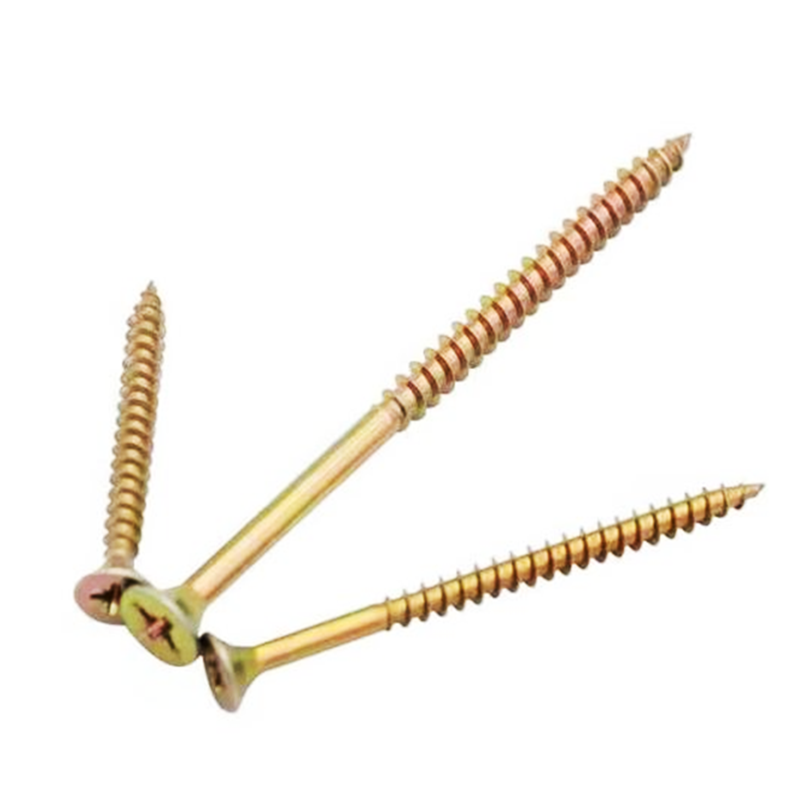What are the advantages of using double countersunk nails over regular nails for rice fiberboard?
Double countersunk rice fiberboard nails offer distinct advantages over regular nails when it comes to fastening rice fiberboard, a material valued for its eco-friendliness and durability. The primary benefit of these specialized fasteners lies in their design, which features two recessed areas on the nail head. This dual countersinking allows the nail to be driven deeper into the material, ensuring that the head is fully embedded beneath the surface. This flush finish not only enhances the aesthetic appeal of the installation but also minimizes the risk of surface damage. In contrast, regular nails often leave their heads protruding, which can create unsightly imperfections and potential hazards, particularly in furniture and wall paneling applications.
In addition to aesthetic considerations, the flush installation provided by double countersunk nails significantly contributes to the structural integrity of the project. When fasteners sit below the surface, they are less likely to interfere with subsequent treatments, such as painting or veneering, and they reduce the chance of the nails snagging during handling or use. This level of integration also helps distribute stress more evenly across the surface of the rice fiberboard, enhancing the overall durability of the construction. Regular nails may not provide the same level of stability, as their exposed heads can lead to localized stress points that might compromise the material over time.

From a commercial perspective, the long-term value of using Double countersunk rice fiberboard nails can outweigh the initial cost difference compared to standard fasteners. While they might be slightly more expensive, their benefits often justify the investment. By ensuring a cleaner finish and improved performance, these nails can reduce the need for repairs or refinishing, ultimately saving time and money. Moreover, as sustainability becomes increasingly important in construction and design, using rice fiberboard in conjunction with specialized fasteners underscores a commitment to eco-friendly practices. The combination not only meets the growing demand for sustainable materials but also aligns with contemporary design trends that prioritize minimalism and functionality.
Furthermore, double countersunk nails are particularly advantageous in specific applications where aesthetic and structural considerations are paramount. In furniture-making, for instance, a flush finish can elevate the perceived quality of a piece, making it more appealing to consumers. The use of rice fiberboard itself, with its natural fibers, enhances the sustainable narrative, while the specialized nails support the integrity and visual appeal of the product. In interior construction, such as wall paneling, the seamless finish achieved by these nails contributes to a polished look, making it an ideal choice for high-end designs.
The advantages of using double countersunk nails over regular nails for rice fiberboard are multifaceted, encompassing aesthetic, structural, and commercial benefits. Their unique design allows for a flush installation that not only enhances appearance but also strengthens the overall integrity of the material. As the demand for sustainable and visually appealing construction materials grows, these specialized fasteners stand out as a smart choice for both professionals and DIY enthusiasts alike, ensuring durability and a refined finish in various applications.
Related products
-

Pan Head Cross Series
-

Countersunk Cross Self-Tapping Screw
-

Countersunk Cross Shaped Fiberboard Nail
-

Large Flat Head Plum Blossom Groove Grass Rope Nail
-

10.9 Grade Flange Outer Hexagonal Fine Thread Bolt
-

Grade 8.8 Outer Hexagonal Bolt
-

8.8 Grade Tooth Bar Full Teeth
-

304 Stainless Steel Teeth
-

304 Stainless Steel U-Shaped Screw
-

304 Stainless Steel Hex Nut
-

Iron Galvanized Flange Nut Hexagonal Anti Slip Locking Belt Tooth Washer Screw Cap
-

Hexagonal Drill Tail Screw

 English
English  English
English 中文简体
中文简体 русский
русский


